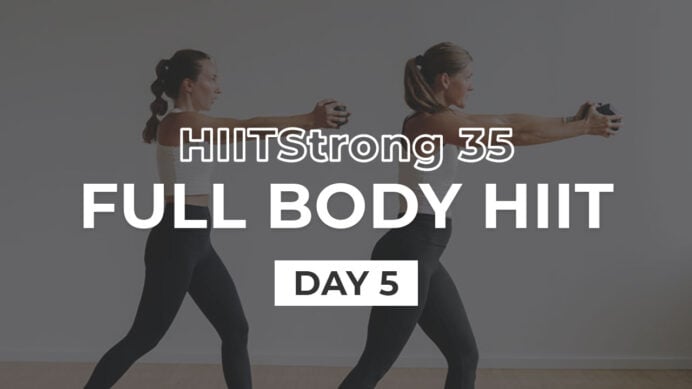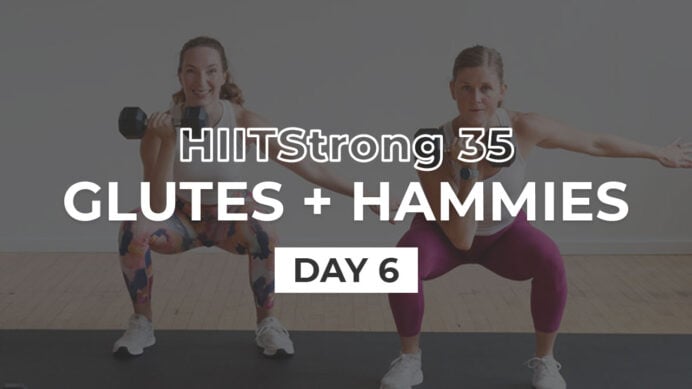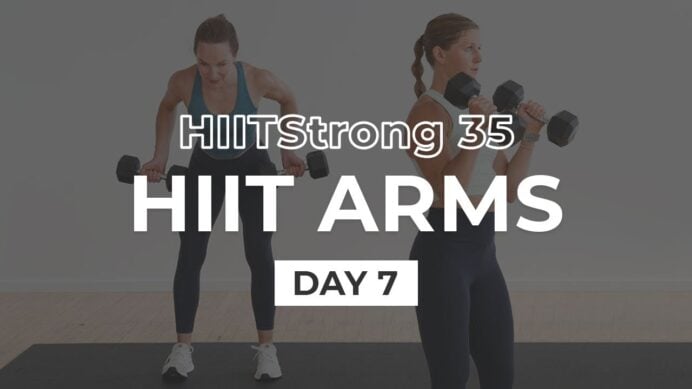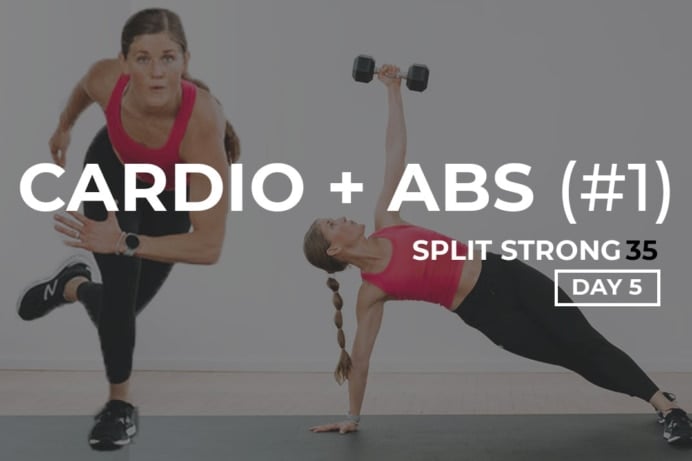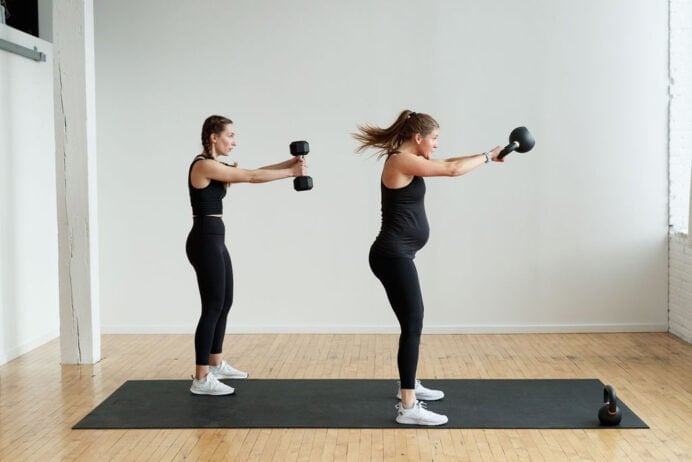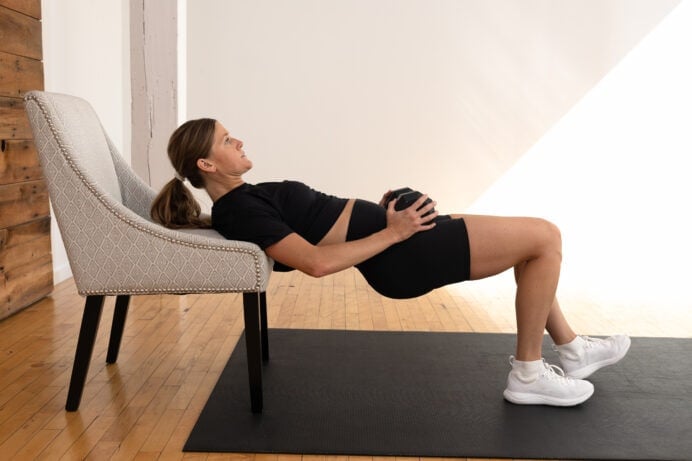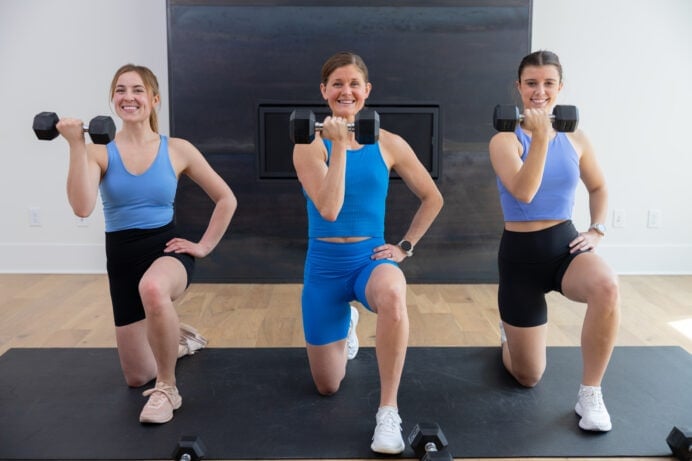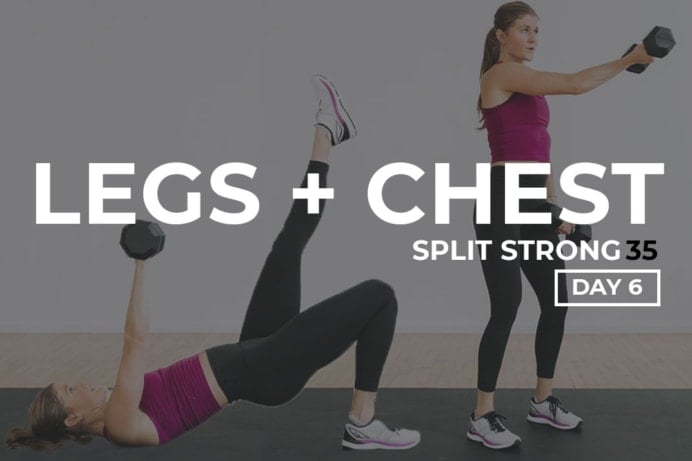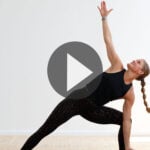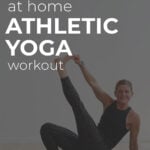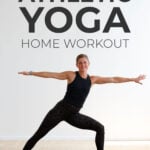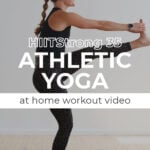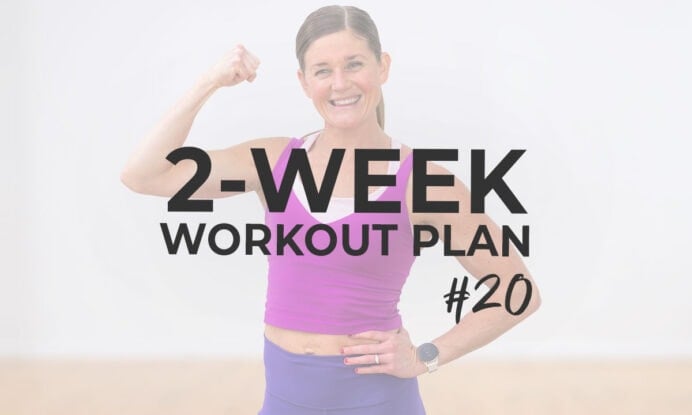
35-Minute Yoga for Athletes
Increase athletic performance, mobility, flexibility, core and full body strength with this full body flow: Yoga for Athletes! This power yoga routine is designed to speed up muscle recovery while improving balance and coordination — benefits that will translate to your other workouts (and daily life).
This is DAY FOUR of our HIITStrong Program.
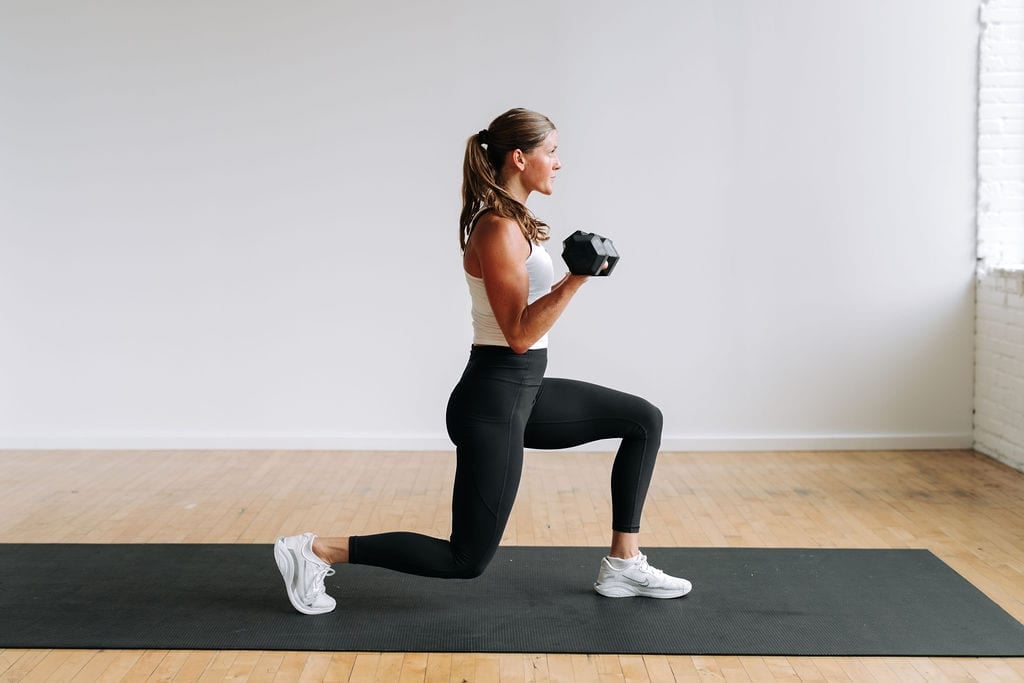
LET’S GET STARTED
Download Your FREE HIITStrong Workout Plan
I’ve said it before and I’ll say it again — if you do my workouts, you are an ATHLETE! And training like an athlete also includes reaping the benefits of yoga — mobility, flexibility, balance and bodyweight strength training.
All of which you will find in this athletic-based power yoga routine.
Whether or not you think of yourself as a ‘traditional yogi’ — I enourage you to give this athletic yoga routine a try.
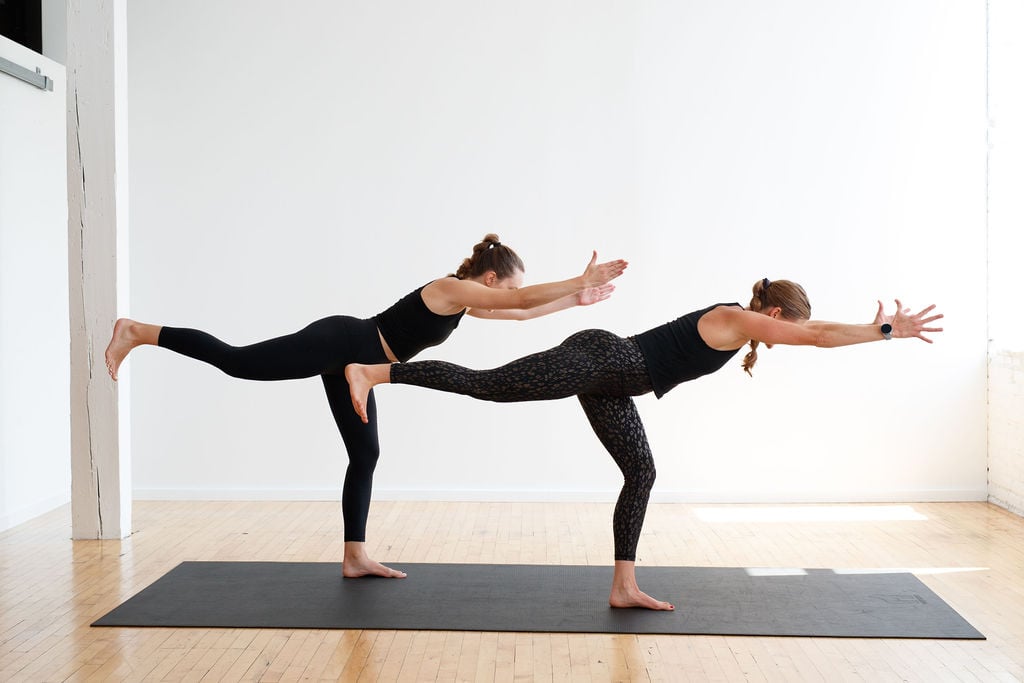
Yoga for Athletes (HIITStrong 35, Day 4)
Increase your strength, coordination, flexibility, mobility and endurance with this guided 35-minute yoga video: YOGA FOR ATHLETES!
You’ll be in a constant flow of movement; flowing from one pose to another. And you can do the entire yoga class at home — no yoga studio or fancy yoga equipment needed.
This athletic yoga class includes the best bodyweight stretches for athletes. And it is designed to improve muscle recovery and increase athletic performance in your other workouts.
Workout Equipment:
No equipment needed, just your body weight and a yoga mat.
Workout Instructions:
Follow along with this Yoga For Athletes Workout on Youtube, led by certified personal trainer and prenatal fitness instructor, Lindsey Bomgren.
Let me be your yoga instructor for the day — I’ll coach you through the entire workout, providing yoga pose form cues and modifications.
Workout Outline
We’ll flow from one move to the next, but here’s a general outline of what to expect:
- Vinyasa Yoga Flow and Table Top Warm Up
- Down Dog to Kick Sits to Crescent Lunge
- Warrior III to Cossack Squat
- Plank to Chatarunga Push Up and Planks with Isometric Rows
- Warrior II Wraps and Triangle Pose
- Single Leg Balance Work to Pistol Squat Practice
- Glute Bridge and Yoga Abs and Core
- Yoga Cool Down and Stretch
5 Yoga Poses for Athletes
Down Dog to Kick Sit
Targets: Upper body, shoulders, back, lower body, hamstrings, quads, hips, hip flexors, calves, abs, obliques and core.
Benefits of Downward Facing Dog: A great stretch for your posterior chain (backside of the body); increasing calf, ankle, hamstring and back mobility. And it strengthens, lengthens, and energizes every muscle in your body while also bringing blood flow to the brain.
Benefits of Kick Sits: An amazing (and challenging) core exercise, working the transverse abdominis, rectus abdominis, internal and external obliques. A great exercise for runners.
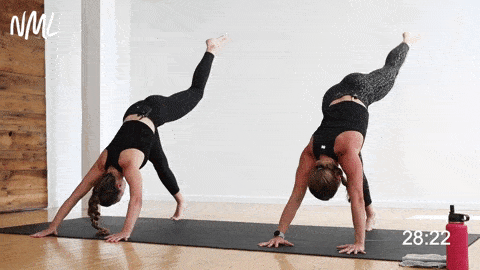
How To Do Down Dog to Kick Sit
- Start in a table top position (quadruped) on all fours; shoulders stacked over wrists and hips stacked over knees.
- Actively press your hands into the mat as you tuck your toes under.
- As you exhale, lift your knees off the mat straightening your legs as you press your hips up towards the ceiling to find downward facing dog.
- Hold down dog, pressing your chest towards your thighs. Then, send your right toes long to find three-legged dog.
- Then shift your weight forward into a high plank as you pull your right knee towards your chest, both knees hovering off the mat and right foot hovering off the mat.
- Perform a kick sit by turning the left foot outward (toes face outward). As you do so, bring your opposite leg (right leg) under and through your body while your right hip slightly brushes the ground as the right leg extends. Weight is in your left foot and right hand, right foot and left hand are off the mat.
- Pull your right leg back through to return to the starting position; down dog.
Modification: Follow Rachel (on the left) and flow from three-legged down dog into a high plank with cross-body knee pull.
Warrior III to Cossack Squat
Targets: Legs, glutes, quads, hamstrings, hip adductors, hip flexors, arms, erector spinae (back and spine), abs and core.
Benefits of Warrior III: Strengthens all the small stabilizing muscles along the backside of the body, feet and ankles; and improves balance.
Benefits of Cossack Squat: A great lower body exercise to improve hip mobility and range of motion.
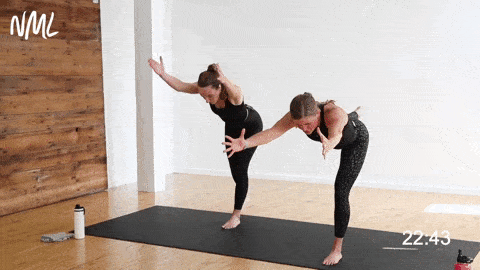
How To Do Warrior III to Cossack Squat
- Start in a staggered-stance position with a slight bend in the front right knee, back left leg behind you and back left heel lifted off the mat. Your hips and chest should be square to the front of the mat. Raise your arms above your head.
- Balancing on your front right leg, lean forward until your back leg extends straight back, even with your hips. Hips are square to the ground. Keep your foot flexed and your gaze downward, arms straight out in front of you. This is Warrior III.
- Then, drive your back left knee up to your chest to briefly find Single Leg Mountain Pose. This creates an added balance challenge.
- Then, step laterally to your left to sit into a Cossack Squat. Step your left leg out to the left and sit your hips back. Left leg creates a 90-degree angle, right leg is straight. Right toes pop off the mat.
Modification: Follow Rachel (on the left) tapping or kick-standing your back left toes to the mat as needed for balance support.
Plank Hold and Isometric Row
Targets: Chest, shoulders, triceps, back, glutes, quads, abs and core muscles.
Benefits of Plank: A true full body exercise that builds strength in your spine, abs and core to improve posture and prevent injuries.
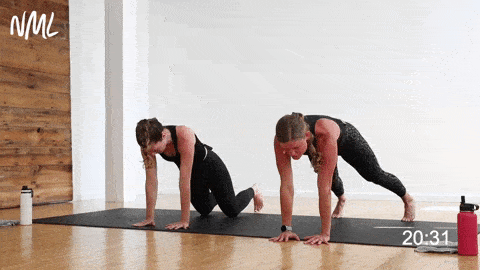
How To Do Plank Hold and Isometric Row
- Start in a high plank position with your shoulders stacked over your wrists. Pull your kneecaps up towards your belly, feet hip-width apart.
- Hold this plank position, maintaining a straight line with your body, gaze slightly in front of you.
- Perform a single arm row by pulling your right hand back towards your hip, elbow up towards the ceiling. Focus on keeping both hips square to the ground as you perform this row. Hold for a few seconds.
- Lower your hand back to the mat slow and controlled.
- Then, alternate the row by pulling your left hand back towards your hip.
- Repeat this plank hold and row pattern.
Modification: Follow Rachel (on the left) and perform the plank and row from your knees. Alternatively you can add an incline to this exercise by placing your hands on a chair or bench.
Extended Side Angle (Triangle Pose) to Reverse Triangle
Targets: The legs, thighs, hips, hamstrings, shoulders, back, abs and obliques.
Benefits of Triangle Pose: Activates the abs and core muscles (specifically the side-ab muscles) while stretching the spine, hips and shoulders.
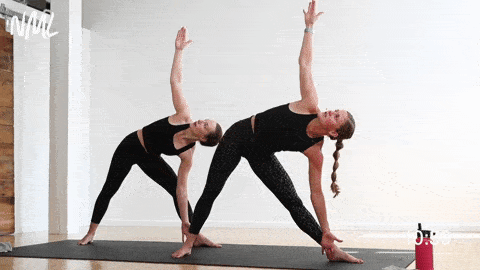
How To Do Extended Side Angle (Triangle Pose) to Reverse Triangle
- Start with feet wider than shoulder-width apart. Extend your arms into a T position, palms facing down. Reach out through the fingertips as if your arms were being pulled in opposite directions.
- Turn your right foot out to 90 degrees, and turn your left foot slightly inward. Press your left outer foot and heel to the floor as you lean toward your right knee, hinging at the hips to bring your right arm toward the floor.
- Reach your left arm up over your left ear. Turn your chest toward your raised arm and turn your head to look past your left hand.
- Hold for a few seconds, then reverse the position to find Reverse Triangle.
- Front right leg stays straight as you pull your torso up. Left arm slides down left leg and right arm reaches up over right ear.
Child’s Pose to Plank with Knee Pull
Targets: Lower back, inner thighs, hips, shoulders, chest, lats, abs, obliques and core.
Benefits of Child’s Pose: A great stretch for your spine, low back and hips while increasing blood circulation to your head.
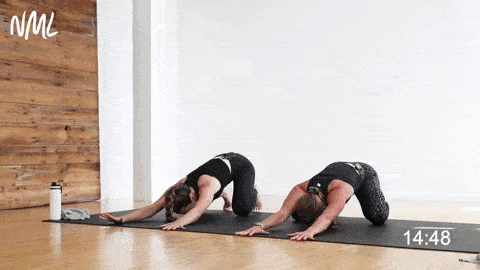
How To Do Child’s Pose to Plank with Knee Pull
- Start in a high plank position, shoulders stacked over wrists, core engaged, pulling up on your kneecaps to engage your quads. Creating a straight line from head to toes.
- Drop your knees to the mat and shift your weight back. Pushing your hips back towards your heels to sit back into child’s pose. Keeping your arms extended out away from your body as you drop your forehead to the mat.
- Take a big inhale in child’s pose.
- On your exhale, push your body forward, returning to the starting position, high plank.
- Once you’re in high plank, pull your right knee up to meet your right elbow.
- Then, sit back into child’s pose and repeat. Alternate the leg that performs the knee pull throughout the flow.
Modification: Stay on your knees as you transition to plank; performing a modified plank from your knees. Alternatively you can add an incline to this exercise by placing your hands on a chair or bench.
Yoga for Athletes FAQs
YES! There are benefits for athletes to include yoga practice as part of a well-rounded fitness routine. There are different types of yoga with varying degrees of intensity, and each has its benefits:
– Vinyasa Yoga or Power Yoga: focuses on connecting the breath to your movements, but tends to move at a faster pace. In a vinyasa practice, you can expect to stay in a constant flow of movements.
– Hatha Yoga: emphasizes holding poses for long periods of time. A yoga class focused on the breath, controlled movements, and stretching.
– Relaxation or Restorative Yoga: a restful practice that holds yoga poses (asanas) for a longer periods of time with deep breathing. Restorative yoga is designed to “restores” the body to its parasympathetic nervous system function, which, in turn, helps the body rest, heal, and restore balance.
– Hot Yoga Classes: a variety of yoga classes can be taught in a heated room, but most commonly taught in a heated room is Bikram Yoga. The purpose of practicing yoga in a hot room is to increase the heart rate for a more intense workout (and for the heat to allow muscles to loosen).
This yoga for athletes sequence follows a vinyasa yoga or power yoga format where you remain in a constant flow of movement (great for cross-training days).
There are so many benefits of athletic yoga that can boost your athletic performance and prevent injury:
– Improved Mobility and Range of Motion: taking the joints in your ankles, hips and knees through a full range of motion with control.
– Improved Coordination, Flexibility and Balance.
– Improved Core Strength: yoga poses strengthening the deep transverse abdominal muscles.
– Improved Mental Focus.
– Reduced Muscle Tension and Strain: yoga is great for gently stretching out tight, sore muscles.
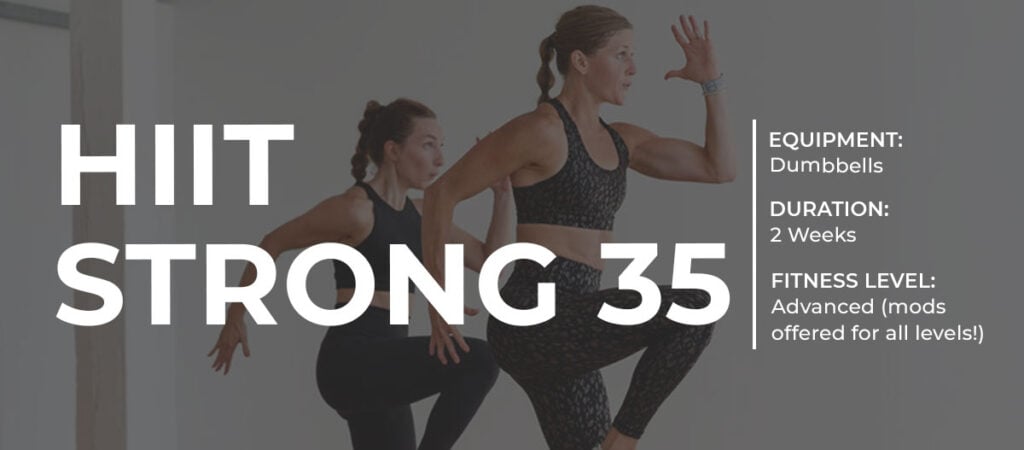
HIITStrong 35: FREE Full Body Workout Plan
A 2-week, high intensity strength training program designed to help you build muscle, burn fat AND train like an athlete at home!
If you liked this chest and back workout at home, download the FREE, 2-Week Full Body Workout Plan.
Up Next:
See AllPin this Yoga for Athletes Workout (HIITStrong 35, DAY 4)
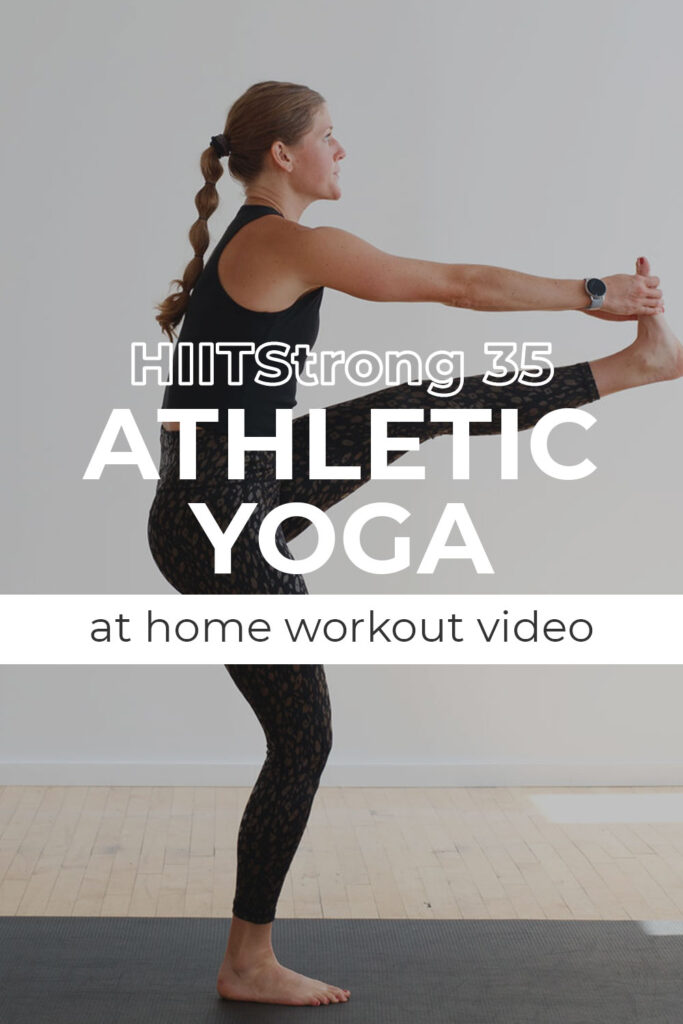
This post includes affiliate links. I do make a small commission for products purchased using these links (at no additional cost to you). Thank you for supporting Nourish Move Love, making the content you see on this blog possible.










